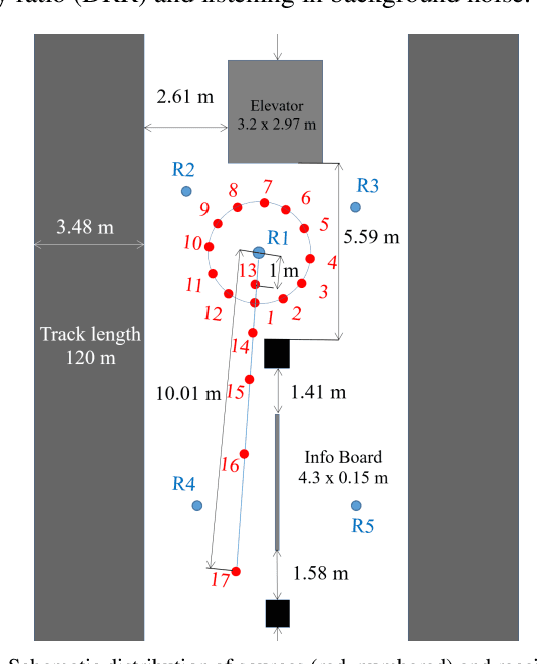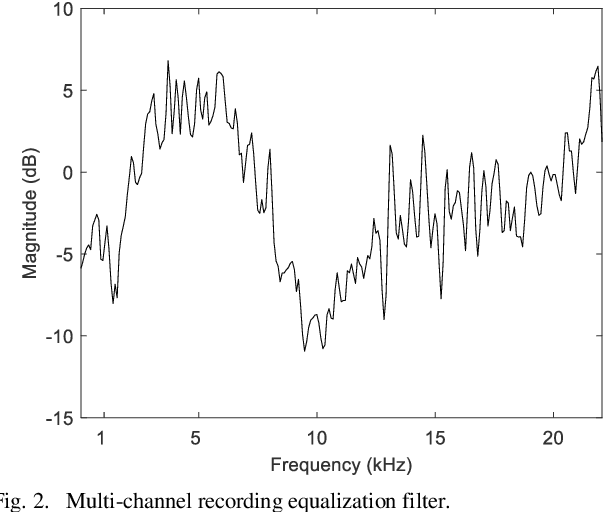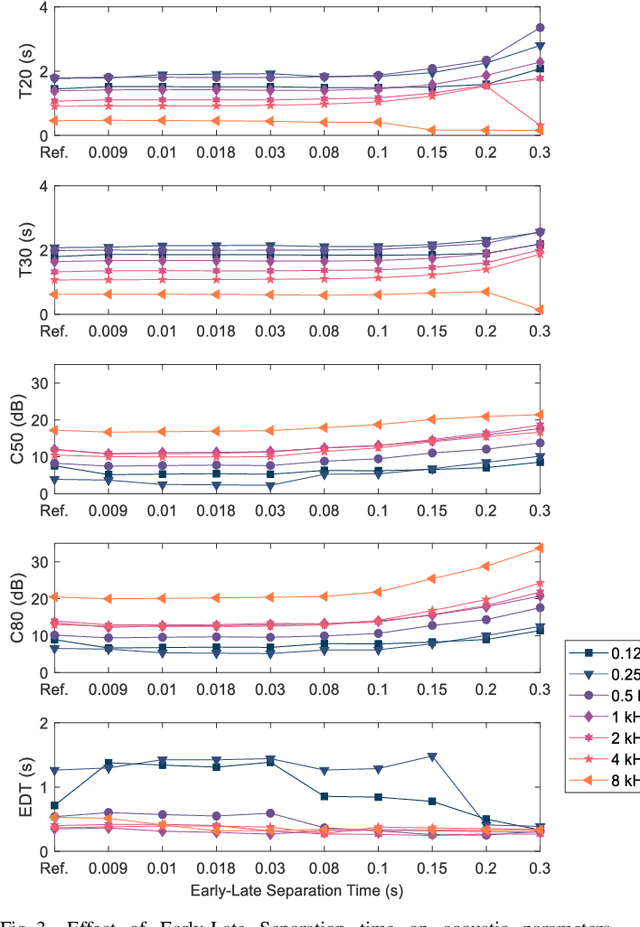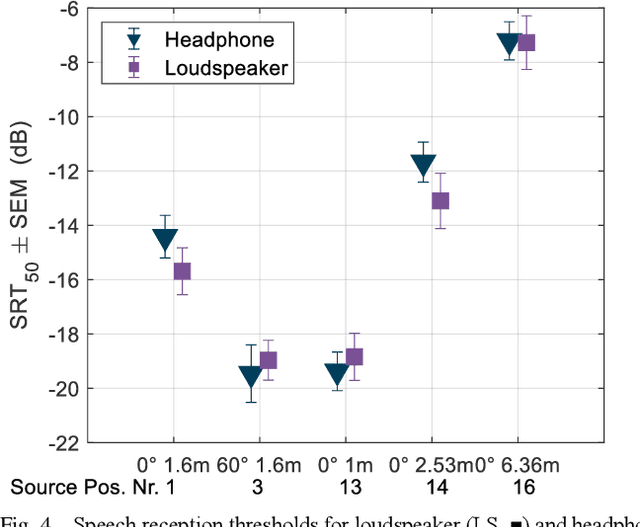Communication conditions in virtual acoustic scenes in an underground station
Paper and Code
Jun 30, 2021



Underground stations are a common communication situation in towns: we talk with friends or colleagues, listen to announcements or shop for titbits while background noise and reverberation are challenging communication. Here, we perform an acoustical analysis of two communication scenes in an underground station in Munich and test speech intelligibility. The acoustical conditions were measured in the station and are compared to simulations in the real-time Simulated Open Field Environment (rtSOFE). We compare binaural room impulse responses measured with an artificial head in the station to modeled impulse responses for free-field auralization via 60 loudspeakers in the rtSOFE. We used the image source method to model early reflections and a set of multi-microphone recordings to model late reverberation. The first communication scene consists of 12 equidistant (1.6 m) horizontally spaced source positions around a listener, simulating different direction-dependent spatial unmasking conditions. The second scene mimics an approaching speaker across six radially spaced source positions (from 1 m to 10 m) with varying direct sound level and thus direct-to-reverberant energy. The acoustic parameters of the underground station show a moderate amount of reverberation (T30 in octave bands was between 2.3 s and 0.6 s and early-decay times between 1.46 s and 0.46 s). The binaural and energetic parameters of the auralization were in a close match to the measurement. Measured speech reception thresholds were within the error of the speech test, letting us to conclude that the auralized simulation reproduces acoustic and perceptually relevant parameters for speech intelligibility with high accuracy.
 Add to Chrome
Add to Chrome Add to Firefox
Add to Firefox Add to Edge
Add to Edge